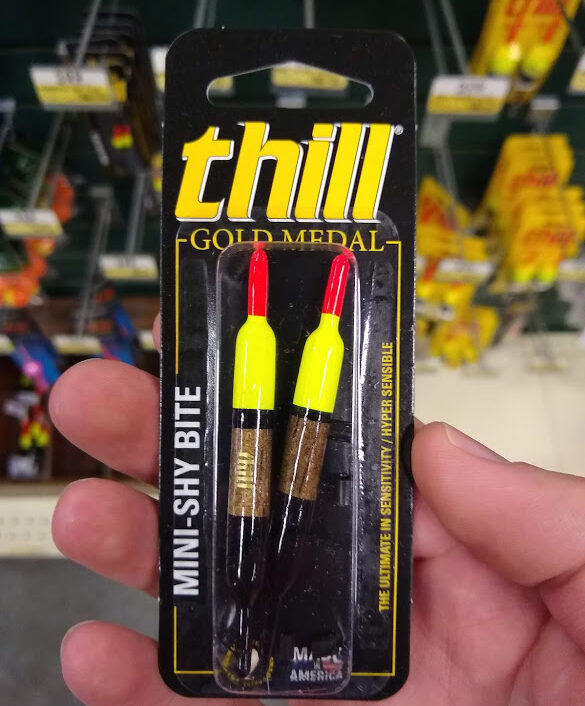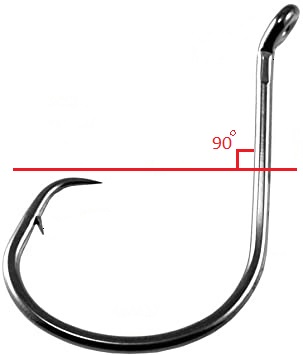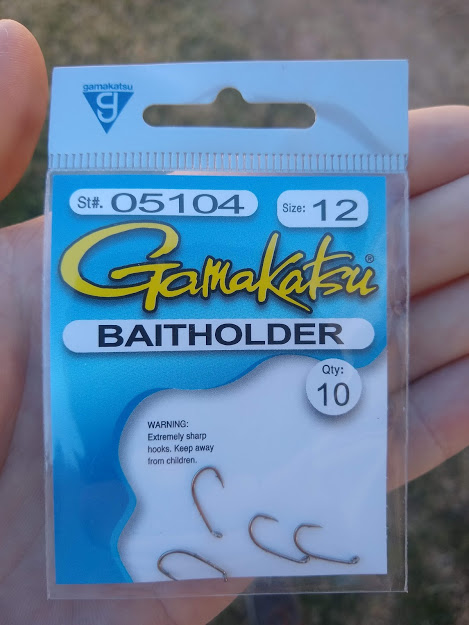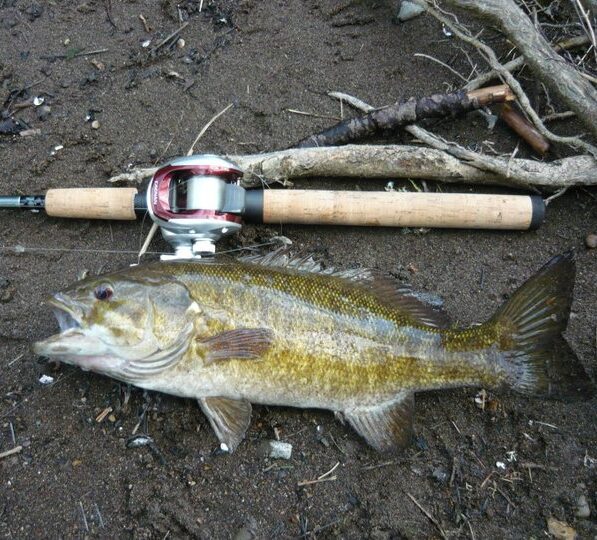I remember when I was first learning how to fish, I would have those days where I’d see, or even feel fish biting my bait or lure, and yet not getting hooked. It’s exciting to see some action, however, it can be quite frustrating when you just can’t seem to hook them. Here are some reasons why the fish aren’t getting hooked, as well as what you can do to hook them.
Quick Answer:
If fish are biting, but you aren’t hooking them, try using better hooks, or sharpen the ones you have. Understand that setting the hook is all about timing, energy transfer, and sharp hooks. Master all three and you will hook more fish.
Why Am I Getting Bites But No Fish?
One reason we as anglers sometimes get bites but fail to catch fish is that many fish like to taste test the bait or lure without fully committing. They will suck the bait in then spit it back out immediately. Therefore, if we don’t have the right timing, we won’t hook the fish.
另一个原因可能是,鱼不是biting our lure with the intent of eating it, but rather as a method of protecting their territory. Bigger fish will often chase little fish out of their spot so they get first dibs on any food that comes by.
Both of these issues can be overcome by practicing the correct timing of the hook set, using the right rigs for better sensitivity and energy transfer, and by using the proper hooks.
Timing The Hook Set
有很多种类的鱼,different species eat their food differently. Some fish will taste the bait first by sucking it in them spitting it out all in a fraction of a second. Other fish will attack a bait or lure and hold it tightly in their mouth.
This means that the hookset timing will be different depending on what fish you are targeting. And it’s not only about the species of fish, but also the type of bait, lure, jig or soft plastic you are using.
It’s too much for me to cover every situation, but here are a few of the most common species and bait/lure types and what to do when a fish is biting it.
Bass
| Lure/Bait | How To Set The Hook |
|---|---|
| Soft Plastics | Once you feel the bite, wait 2 to 3 seconds then set the hook hard. |
| Crankbaits | Pull the rod tip sideways. You don’t need to jerk it in, just apply pressure. |
| Top Water | After the fish strikes it, wait a couple seconds, then set the hook. |
| Spinnerbaits | After the initial hit, keep reeling until you feel the pull of the bass than sweep the rod back. |
Trout
| Lure/Bait | How To Set The Hook |
|---|---|
| Spinner/Spoon | Just reel steady and let the fish hook itself. |
| Bait Under a Bobber | Wait until the bobber goes completely under the water then set the hook hard and fast. |
| Bait on a Sliding Sinker Rig | At first the rod tip will bounce. Wait for it to go down and stay down then set the hook hard and fast. |
Catfish
| Bait | How To Set The Hook |
|---|---|
| Under a bobber | Wait for the bobber to go under and stay under. Then reel in slack until you feel the pull of the fish. |
| On a Sliding Sinker Rig | Wait for the rod to go down and stay down, then reel until you feel the pull of the fish. |
To sum it up,when a fish is biting your bait, you should wait until it has fully taken it into it’s mouth and tries to swim away with it. Then you can reel until you feel tension, and pull fast to set the hook.
When a fish bites a lure, hold the rod tight and continue reeling steadily. The fish should hook itself.
Energy Transfer
The second key point to hooking those biting fish is to have the right rig and set up. This will ensure that the bite will not only be transferred clearly to you, but your hook set energy will be transferred to the hook.
You want to make sure you have as much contact with your hook as you can. This means not allowing excess slack in your line, using small bobbers, and sliding sinkers.
The problem with having too much slack in your lineis that when a fish bites, you won’t be able to set the hook with a simple pull of the rod. instead you’ll have to reel in the slack then set the hook. This can totally mess up your timing, and cause you to lose the fish.
The problem with using too big of a bobberis that a fish could bite at your bait without you even seeing the bobber move, because the bites are too light to move the big bobber.
And if you do see the bobber move, then when you set the hook, your energy is going into pulling the bobber through the water rather than pulling the hook into the fish’s mouth.

The reason to use a sliding sinkeris similar to the bobber. If the fish has to bite your bait and drag a heavy sinker before you notice the bite, then it will probably spit the bait out as soon as it feels the pull of the lead. By using a sliding sinker, the line will slide through and the energy of the bite will be transferred directly to your rod tip.
And it works the same way when you set the hook. The energy of your hookset will be transferred directly to the hook rather than to dragging a heavy sinker.
Proper Hooks
The third reason why a fish is biting but not getting hooked could be because the hook is either too big, too small, the wrong shape, or it isn’t sharp enough.
Hook Size
The most common reason for not hooking fish that are biting is anglers using hooks that are too big for the biting fish. When I’m missing bites, the first thing I’ll do is downsize my hook.
The only time I wouldn’t downsize my hook is if I only want to catch bigger fish.Many times, the fish biting are small bluegill, catfish, or shiners. You may consider these nuisance fish and will just have to deal with them until a bigger fish comes along.
You can also miss bites if your hook is too small. Catfish have a thick jaw bone and so it’s best to use a big hook with a wide gape to hook around that bone.
Hook Shape
There are many different shapes of hooks out there. They can be specialized for different species, different baits, and even different hooksets.
One of the most unique, yet popular hooks are called circle hooks. These are bent in a circular shape, and the very point of the hook is bent over at around 90 degrees to the shaft.

Circle hooks are designed to set themselves in the corner of the fish’s mouth. These should only be used for bait fishing and not on lures. If you are fishing with circle hooks, let the fish eat the bait and swim off. All you need to do is hold on to the rod. If you try to set the hook yourself, you’ll likely just pull the hook out and the fish will swim free.
Not all hook shapes catch all types of fish. Here is a table to give you some of the basics.
| Species | Hook Type |
|---|---|
| Bass | J-Hook, Octopus Hook, Worm Hook, (thick wire) |
| Trout | J-hook (thin wire) |
| Catfish | Circle Hook, J-hook, Octopus Hook (thick wire, wide gape) |
| Carp | J-Hook |
| Sunfish | J-Hook, Aberdeen Hook (thin wire) |
Sharp Hooks
A commonly overlooked reason for fish biting but not getting hooked is a dull hook.
The reason this is often over looked, is that most all hooks seen sharp to the touch. However, most hooks (especially cheaper ones) could use a good sharpening right out of the package.
Some companies sell cheap hook sharpeners, but most of these are too rough of a grit and will make a new hook even more dull. I recommend a diamond stone sharpener around 600 to 1000 grit.

However, diamond stones are very expensive, so unless you already have one lying around, just spend a couple extra bucks to get good quality hooks. Gamakatsu and Owner are usually trustworthy brands.
Conclusion
If fish are biting but not getting hooked, then make sure you are using a good fishing rig like the sliding sinker rig, or a bobber rig with a properly sized bobber. You should also check your hooks for sharpness, and that they are the correct size and style.
Everyone misses bites every once in a while. Sometimes it isn’t your fault. Hopefully with this information, you catch more fish than miss. Have fun out there!
